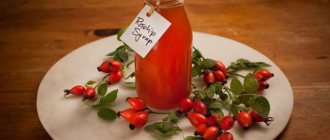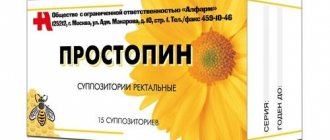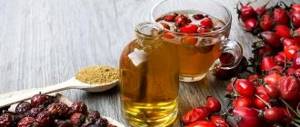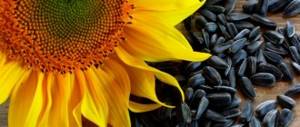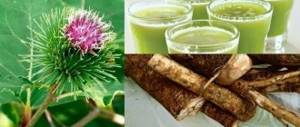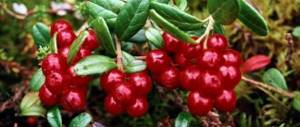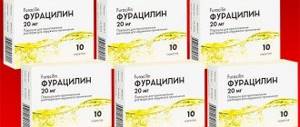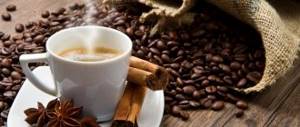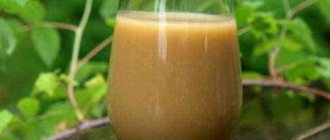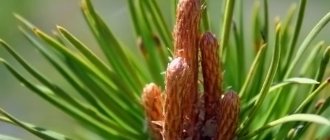How lingonberry leaves will help during pregnancy and edema
During pregnancy, lingonberry leaves are recommended for use in cases of infectious urinary tract diseases and nephropathies. It is also prescribed if the patient has diabetes.
The leaves play an important role in maintaining the physical condition of a pregnant woman. During this period, the body's need for vitamins and microelements increases. The use of lingonberry foliage compensates for the deficiency of nutrients necessary for the female body. Let's look at what actions they have:
- B vitamins are responsible for the emotional state of the expectant mother.
- Carotene has a positive effect on vision.
- During pregnancy, it is undesirable to catch a cold, so in winter, lingonberry leaves, rich in vitamin C, are recommended for use by women.
- Vitamin P normalizes blood pressure and relieves swelling.
- Iron is responsible for the level of hemoglobin in the blood.
- Calcium not only strengthens the mother’s bone tissue and tooth enamel, but also participates in the development of the fetal skeleton.
To get rid of swelling, it is convenient to use packaged lingonberry leaves. The bag is brewed in a glass of boiling water for about 15 minutes. Then it is extracted and the tea is consumed during meals, 1-2 times a day, 100 ml. The course of treatment is usually determined by your doctor.
You can brew 1.5 tsp. dry leaves in 300 ml of boiling water. Cover the cup with a plate or lid for 25 minutes. Stronger tea is obtained by brewing in a thermos. Drink a warm drink 3 times a day. It quenches thirst well on hot days and has a sour taste. The dosage is determined depending on the general well-being of the pregnant woman.
If after the first dose of lingonberry no allergic reactions occur and your health does not worsen, then you can continue the course of administration. The main symptoms of allergies are rash, itching, sneezing and runny nose.
You may be interested in the beneficial properties of rose hips
Beneficial properties and effects on the body
The medicinal properties of the taiga berry are due to its unique composition. It has a complex effect on the human body, increasing its tone, and is even capable of enhancing the effect of antibiotics, which makes it possible to use a smaller dosage of the drug.
Lingonberries contain:
Also in fruits and leaves there are tannins, tannin, rutin, and acids.
The properties of lingonberries are difficult to consider using the example of one system or organ. It contributes to a comprehensive improvement in the functioning of the whole organism, normalization of activity of the nervous, digestive, endocrine systems, and immunity.
One of the best diuretics
Lingonberry leaf is rightfully considered a natural diuretic, as it effectively helps and does not cause side effects. Let's look at how to take lingonberries for various diseases. The foliage is used as a diuretic for cystitis, gout, prostatitis, rheumatism, kidney disease, liver disease and to eliminate swelling.
If there is sand in the kidneys and stones in the bladder, it is recommended to prepare the following infusion:
- Pour 50 grams of lingonberry leaves into a liter of boiling water.
- Leave for approximately 2 hours.
- Add 120 ml of vodka and keep the resulting product on low heat for 20 minutes.
- Drink 100 ml of tincture half an hour before meals 3 times a day.
Lingonberry is used as a diuretic for gout and cystitis in the following form:
- The tincture is prepared from 1 tbsp. leaves and 250 ml of boiling water.
- Combine the components and leave for 1.5 hours.
- Filter and drink 2 tbsp. 4-5 times a day.
If swelling is caused by liver and kidney diseases, then make the following tincture:
- Pour 20 grams of lingonberry leaves into 250 ml of boiling water.
- Leave for 1 hour, then strain through cheesecloth.
- Drink 1 tbsp. 3 times a day.
Inflammatory kidney diseases
In case of inflammatory processes in the kidneys, it is very important to establish the cause of the disease. If the pathology is caused by an infection and it affects the tubular system (pyelonephritis), lingonberry preparations can be used in complex treatment as an additional remedy. If the inflammatory process is caused by pathological autoimmune processes and has led to kidney failure, taking lingonberries is contraindicated in most cases.
If pyelonephritis of an infectious nature is diagnosed, folk remedies based on lingonberries for the kidneys can be used in complex therapy. We will tell you further how to drink them and how to cook them.
Methods of using the leaves and fruits of the plant
The ideal dose, methods of application and preparation of the leaf or lingonberry fruit differ for different patients. This natural diuretic is indicated for hypertension, cystitis, kidney stones, prostatitis and rheumatic lesions. For example, with hypertension, inflammation in the bladder, as well as with pathologies of the kidneys and liver, an excellent effect can be achieved if you use this recipe: 100 ml of lingonberry juice is mixed with a spoon of honey. This diuretic must be taken three times a day.
To eliminate body swelling caused by liver and kidney diseases, you need to drink an infusion of lingonberry leaves. To do this, pour 2 teaspoons of dry raw materials into 0.25 liters of boiling water and leave the product for about an hour. After filtering, the infusion should be consumed 1 tbsp. l. before each main meal. In a similar way, it is necessary to brew lingonberry leaves for gallstone disease, but the dose in this case will be twice as large.
For gout, cystitis and pyelonephritis, take 200 ml of leaf decoction 2 times a day. It is brewed based on the proportion: 10 g of dry herb per 0.25 liter of hot water. The broth is left to simmer for 10 minutes.
For kidney and bladder stones, an alcohol tincture or a drink of lingonberry leaves with vodka is indicated.
Such preparations are prepared according to the following recipe: 100 g of dry leaves are steamed with 2.5 liters of boiling water (about two hours), then the infusion is filtered, 250 ml of vodka or alcohol is added to it. The resulting product is simmered over low heat for a quarter of an hour, without allowing it to boil. The ready-made tincture is drunk three times a day, 100 ml half an hour before meals. The described course of treatment is quite long (several months), but it should not exceed six months.
Lingonberry leaf for kidneys – Lingonberry
The beneficial properties of lingonberry leaves are used in complex therapy of various kidney diseases (failure, urolithiasis, pyelonephritis).
Combining a diuretic effect, antibacterial properties, antispasmodic action and availability, the product has become popular among patients and doctors. Lingonberry has been used in folk medicine since ancient times and has not yet lost its position among medicinal plants.
The widespread use of lingonberry leaves is explained by the unique composition of biologically active components and its relative safety. The leaves are used more often than berries, although all parts of the plant contain beneficial properties.
You can prepare the healing agent yourself or purchase it from a pharmacy in the form of crushed dried raw materials or filter bags.
Healing composition of leaves
The composition of useful components in lingonberry fox is amazing with a variety of unique substances. The leaves of the evergreen shrub lingonberry contain:
- ascorbic acid or vitamin C;
- routine;
- B vitamins;
- organic acids (tartaric, gallic, quinic, ursolic, ellagic);
- arbutin (natural antiseptic) in the amount of 9%;
- vaccinin (antiseptic);
- hydroquinone;
- methylarbutine (diuretic);
- tannins in quantities from 5 to 30%;
- coumarins (vasodilator effect);
- macro- and microelements (rich in manganese, magnesium, potassium, selenium and zinc).
Due to the presence of the natural antiseptic glycoside arbutin, the leaves are widely used to treat kidney diseases. This phytoncide is capable of inhibiting the growth of even Staphylococcus aureus. Organic acids (tartaric and quinic) promote a diuretic effect.
Ursolic acid and a high content of tannins have an astringent and demineralizing effect, improving the effect of antibiotics in complex therapy.
Vitamin C, rutin, microelements help strengthen blood vessels and capillaries, establishing normal blood supply to organs and tissues. The active components of the leaves help regulate nitrogen metabolism and remove toxins from the body.
Thus, lingonberry leaves have a diuretic, antibacterial, antispasmodic, anti-inflammatory, and vascular strengthening effect.
Lingonberry leaves for inflammatory kidney diseases
Pathologies and infectious diseases of the kidney are one of the main areas of use of this healing agent. The diuretic and antiseptic effect perfectly helps relieve swelling and extinguish inflammation in nephritis and pyelonephritis.
Lingonberry glycosides, entering the body, turn into hydroquinone, which irritates the parenchyma of the kidneys, causing the secretion of fluid. Pathogenic organisms are removed by being washed out of the kidney structure. Vaccinin and arbutin complement the antimicrobial effect and have a positive effect.
It has been proven that relief from the acute period of pyelonephritis occurs faster when drinking drinks made from lingonberry leaves. Moreover, the beneficial effect on the vascular system and the mild antispasmodic effect help reduce unpleasant symptoms and difficulties in excreting urine. The recovery period for patients is shortened.
Deintoxication of the body takes place in a faster time, significantly improving the general well-being of patients and facilitating the healing of inflammatory foci. The use of infusions and decoctions helps to avoid exacerbations of chronic nephritis and pyelonephritis.
Lingonberry leaves for urolithiasis
It is believed that drinks based on lingonberry leaf help soften kidney stones and remove them from the body. Indeed, the vasodilator and diuretic effect is expressed when taking decoctions of the leaves of the bush.
But with this disease, uncontrolled displacement of large stones can cause serious health problems, blockage of ducts and even a threat to life. Therefore, treatment with lingonberries can only be recommended by a doctor who knows the individual picture of the patient’s illness and the risks.
In cases where the problem of oxalate deposits in the kidneys begins to arise, we recommend using a decoction of the leaves to prevent the formation of kidney stones. Low acidity is characteristic of this disease.
Organic acids (tartaric, gallic, ursolic) help normalize metabolism and slow down the processes of oxalate deposition.
Basically, lingonberry drinks are used for the prevention and removal of small mineral particles, relieving pain and inflammation. The diuretic effect of drinks normalizes acidity, flushes out harmful microorganisms, toxins, and small mineral deposits, thus cleansing the kidneys of harmful components.
Lingonberry leaf for kidney failure
The manifestation of renal failure is a very serious disorder and may already be a consequence of the neglect of another disease. Increasing the diuretic effect in this case can aggravate the symptoms, increasing the load on the kidneys.
Therefore, renal failure is a contraindication for the use of lingonberry leaves in the treatment.
The medicinal properties of the plant are used to prevent such complications in the treatment of other diseases and after consultation with a doctor.
Recipes from lingonberry leaves for home use
Infusions, decoctions, and lingonberry tea are used for medicinal purposes. It is easy to prepare these drinks at home, using dried and crushed leaves of the bush, prepared in advance or purchased at the pharmacy:
- Preparing the infusion. About 10 grams of crushed raw materials, which corresponds to two tablespoons, are poured with a glass of water and left in a water bath for 30 minutes, with the lid closed. The after-solution is filtered and the remaining leaves are squeezed out. The resulting infusion is diluted with another glass of water and consumed in 1/3 glass. The course of use is usually 2 weeks.
- Preparing an infusion of a waterless bath. A tablespoon of lingonberry leaf is poured into a glass of boiling water, covered and left for 3 hours. Then filter and consume, dividing the resulting infusion into 3 doses. Convenient to prepare a fresh drink every day.
- Preparation of the decoction. The raw material in the amount of 2 tablespoons is poured into 500 ml of water and placed on the fire to bring it to a boil. Boil the mixture over low heat for 10 minutes, then leave for another hour. Take 1/3 cup 3-4 times a day, the last dose should be 3-4 hours before bedtime. The appointment may last 2-4 weeks.
- Prepare tea in the usual way. 1-2 filter bags or 1-2 teaspoons are poured with 200 ml of boiling water and left to brew for 30 minutes. lemon or honey is added for taste.
Patient reviews on the use of lingonberry leaves
"Greetings to all! I would like to share my impressions of using lingonberry leaves to prevent exacerbations of pyelonephritis. I am 35 years old. At the age of 28, I developed a severe cold in my kidneys and was diagnosed with pyelonephritis. Back pain, fever, it only became easier when lying down. She was treated with antibiotics.
Since then, during the spring-winter period, getting wet feet or hypothermia provoked pain in the kidney area. Over the course of several years, I introduced the habit of drinking lingonberry tea during the cold season in courses of 14 days tea/14 days break for 3 months. There have been no exacerbations for a very long time. I think that this is the effect of the lingonberry leaf, since I do not use any other means.
I’m already used to the bitter taste, sometimes I add lemon, it becomes like green tea.”
"Good day. My name is Nina, 62 years old. When visiting a doctor, tests revealed a tendency for salt deposits in the joints and sand in the kidneys according to ultrasound. The urologist prescribed drinking a decoction of lingonberry leaves for prevention. I have been using the decoction and infusion for several years, and there are no kidney stones yet. I feel good after the course of treatment, there is less pain, it helps with swelling, you can feel it right away.”
TAGS: kidneys
WE RECOMMEND:
Source: https://brusnikabrusnika.ru/brusnichnyj-list-dlya-pochek/
What are the benefits of lingonberries?
This bright red northern berry contains a whole range of useful substances necessary for humans. Lingonberries are especially known for the following beneficial properties:
- Strengthens the immune system as it contains vitamin C, magnesium, iron, potassium, manganese.
- In medicine, lingonberries are used as a diuretic.
- Due to the content of benzoic acid, it exhibits pronounced antimicrobial and anti-putrefactive properties.
- A large amount of procarotene and vitamin A helps maintain and improve vision.
Lingonberries are also useful during pregnancy because:
- replenish the lack of vitamins,
- do not cause allergic reactions,
- contain vitamins E and P, which counteract swelling
- normalize blood pressure.
When listing the benefits of lingonberries for pregnant women, it is necessary to mention the presence in the berries of B vitamins, which tonic the nervous system and are responsible for a positive attitude towards life.
The benefits and harms of lingonberries are determined by the characteristics of its chemical composition, as well as the place where this bright and tasty berry is collected. The berries accumulate heavy metals, so it is better to bypass lingonberries growing near roads and look for berries away from enterprises, cities and highways.
Contraindications and side effects
Like any medicine, lingonberries have their contraindications. Before using it, it is better to consult a doctor.
- There are a number of diseases, in the treatment of which the plant can aggravate the situation:
- If you have low blood pressure, you should not take this medicine. It will lower the pressure even more;
- If you have kidney failure, it is better to avoid the plant. The diuretic function will lead to a worsening of the condition of the diseased organ;
- Lingonberries contain large quantities of acids, so they should not be used by patients with high stomach acidity;
- raw berries should not be taken for ulcers or disorders of the integrity of the gastrointestinal tract.
The drug should be treated with caution and not abused. Lingonberries have strong medicinal properties. You must strictly follow the prescribed dosage and immediately stop using the drug at the first sign of side effects.
Cooking recipes
How to take decoctions during pregnancy?
During this period, a large load is placed on the entire female body, especially the kidneys, which is why many doctors advise pregnant women to add lingonberries to their diet. You can prepare lingonberry juice, you can add leaves to salads and soups, brew tea, but the most popular and effective is a decoction. It relieves the load on the kidneys, having a diuretic effect, and in the final stages helps to cope with edema. To make a decoction, use 10 grams of dried leaves, pour boiling water (200-300 ml) over them, and leave to steep for 1-2 hours. After a while, the finished decoction is consumed 1-2 tablespoons 10-15 minutes before meals. It should be taken up to 5 times a day for several days.
For cystitis
A disease such as cystitis worries many women, especially during the cold season. In folk medicine there are recipes that can cure this disease, relieve inflammation and establish normal function of the genitourinary system. The following herbal mixture should be prepared: 3 volumes of lingonberry leaves, 2 volumes of sage, tricolor violet, fireweed, meadowsweet and dandelion leaves, 1 volume of chamomile, marshmallow root and mint. The ingredients are mixed and brewed, 1 large spoonful of the mixture per 500 ml of boiling water. The infusion should stand for at least an hour and be taken up to 8 times a day.
An equally effective medicine for kidney ailments is lingonberry juice. You need to put the pre-washed berries to cook. As soon as the water boils, remove from heat and leave to steep for half an hour. The boiled berries are finely ground on a sieve. The resulting fruit drink is diluted to your taste and sweetened with honey or sugar. This lingonberry drink not only has a diuretic effect, but also increases hemoglobin.
To make lingonberry tea, take one teaspoon of leaves, add boiled water and leave to steep for about an hour. Strained infusion, drink ¼ glass 30 minutes before meals three times a day. This infusion helps not only in the treatment and prevention of the urinary tract, but also promotes a speedy recovery from gastritis.
Diuretic collection "Brusniver"
If it is not possible to collect fruits or a person prefers pharmaceuticals, you can purchase a medicine such as Brusniver. It contains lingonberry (50%), rose hips (20%), St. John's wort (20%) and string (10%). It is often prescribed in combination with other drugs for urethritis and other diseases of the genitourinary system. “Brusniver” is a heterogeneous mixture that contains crushed particles of fruits, twigs, and stems. To prepare, pour 4 teaspoons of Brusniver with boiling water (500 ml). The collection is left to stand for 30 minutes, then boiled for another 15-20 minutes over low heat. Let it sit for about an hour and strain.
Diuretic collection "Brusniver"
When it is not possible to prepare lingonberry raw materials yourself, or if the patient trusts purely in drugs from the pharmacy, you can choose the medicine “Brusniver”.
Ingredients of this product:
- lingonberries (50%);
- St. John's wort herb (20%);
- rosehip (20%);
- succession grass (10%).
The collection is prescribed in combination with other medications for urethritis and other pathologies of the genitourinary system. The consistency of the mixture is not uniform: in the collection you can observe crushed stems, twigs and pieces of fruit.
To prepare Brusniver you will need 4 tsp. pour the mixture into 500 ml of boiling water. The product is infused for approximately 30 minutes, after which it is further boiled over low heat for about 15 minutes. Then this decoction is allowed to brew a little more and filtered. Drink tea according to the recommendations provided by the attending physician.
Cystitis is not a death sentence. Lingonberries to the rescue.
It is believed that the plant is of higher quality when crushed, since the bagged form involves the use of the powder remaining after the main processing of the leaves.
Cystitis is an inflammation of the bladder. This disease most often affects women of any age. It has been established that the most effective herbal remedy is the lingonberry leaf. It contains arbutin. It is this substance that has a diuretic effect, as well as antiseptic and anti-inflammatory.
When treating cystitis with lingonberries at home, you must follow several rules:
- Lingonberry leaves for making teas and infusions must be environmentally friendly;
- Use only enamel or glass containers;
- The leaves must be crushed to 5 mm.
- Maintain the proportions of raw materials and water.
- Lingonberry infusions are stored for no more than 3 days.
- You should consult your doctor about the exact dosage and duration of the course.
A decoction of lingonberry leaves for cystitis is prepared from 2 tbsp. leaves and 500 ml of boiling water. Pour the lingonberries into the pan and first add 250 ml of water. Cover with a lid and place in a water bath. After half an hour, add the remaining boiling water. The decoction is taken 3 times a day, half an hour before meals, 50 ml. The course of treatment is 2-8 weeks.
Main medicinal characteristics of lingonberries
The plant has tonic, anthelmintic and antipyretic properties. Thanks to the vitamins, they also help with scurvy and vitamin deficiency. The plant has hemostatic properties and accelerates wound healing, so it is used in the treatment of internal and uterine bleeding. The berry is also effective for hypertension and rheumatism, cholecystitis, gout, and salt deposition. The berries and leaves of the plant help in the treatment of stomach tumors, hypoacid gastritis and pulmonary tuberculosis, enteritis and neurasthenia.
Also, these berries are a strong diuretic and are used in the treatment of cystitis and enteritis. Lingonberry is a natural relaxant. It helps relieve fatigue and restore strength. Juice from the berries of the subshrub is useful at the first signs of a cold, exhaustion and headaches. The fruits of the plant are recommended for people with impaired vision, schoolchildren and pilots, as they improve visual acuity.
Yagod
Composition of the scarlet fruits of the plant:
- 10–15% saccharides: glucose, fructose, sucrose;
- malic, salicylic and citric acids, which give a sour taste;
- vitamins of groups B, C, E, A;
- magnesium, manganese, iron, phosphorus, calcium and potassium;
- benzoic acid;
- carotene;
- pectin.
Did you know? Benzoic acid extends the shelf life of lingonberries and gives them preservative properties. Thanks to this, the leaves do not lose their quality for a long time and do not require special storage conditions.
Lingonberry is a low-calorie berry.
100 g of fruits, whose calorie content is 46 kcal, contains:
- proteins - 0.7 g;
- carbohydrates - 8.2 g;
- ash - 0.2 g;
- fats - 0.5 g;
- water - 86 g.
Leaves and branches
The leaves are most often used for medicinal purposes.
Find out the benefits and harms of lingonberry leaves.
They are rich in healing qualities, because they consist of:
- vitamins - B1, B3, B6, B9, B12 and C;
- quinic, gallic and tartaric acid;
- tannins;
- hydroquinone;
- arbutin;
- phytoncides;
- tannins;
- carboxylic acids.
They are known for their antiseptic and anti-inflammatory qualities. Used in the treatment of the genitourinary system as part of complex therapy.
Indications for the use of the diuretic properties of lingonberries
Cowberry leaf is used for renal dysfunction, pyelonephritis, bacteruria, and urolithiasis. These diseases are often accompanied by edema. The diuretic properties of this valuable plant will help relieve swelling of tissues of renal etiology. An infusion from the leaves of a medicinal plant also helps greatly with cystitis. The complex effect on the body of both diuretic and antimicrobial effects has a beneficial effect on the condition of the bladder and ureters. Tissue swelling caused by kidney disease is significantly reduced. The diuretic properties of lingonberry leaves are used in the treatment of hypertension, which is usually accompanied by edema. Lingonberries are recommended for diseases such as:
- rheumatism
- osteochondrosis
- gout
- diabetes
- prostatitis
- arthritis
- stomatitis
- enuresis
- cholelithiasis
Benefits and harms
The subshrub has many medicinal qualities, which are actively used in modern and folk medicine.
- The beneficial properties of the plant include the treatment of diseases:
- impaired metabolism;
- kidneys and urinary tract;
- diabetes mellitus;
- fever;
- cystitis;
- vitamin deficiency
- Also an evergreen shrub:
- has a diuretic effect on the body;
- performs antipyretic function;
- has antiseptic properties;
- has an astringent function.
Other uses
The main indication for the use of decoctions and infusions from the leaves is kidney stones, but they also help against gout and rheumatism. The above-ground part of the bush and the fruits are used for vitamin deficiency. The drug works well when kidney and liver diseases are diagnosed.
Traditional medicine recipes suggest taking decoctions of the leaves and berries of the bush for colds and coughs, chest pain, uterine bleeding, heart disease, and tuberculosis. An infusion of dried leaves has antimicrobial, anti-inflammatory, diuretic and choleretic properties.
The crushed fruits are taken for gastritis, when the acidity of stomach juice is reduced, and also as a laxative. Boiled, soaked, freshly picked lingonberries are recommended for diarrhea, rheumatism, and stomach catarrh. The berries have a powerful diuretic effect, but are not harmful even if consumed in excess.
The fruits are used to prepare jam, marshmallows, compotes, extracts, and candy filling. You can grind the berries with sugar, pickle them, soak them. Dry, fresh fruits are suitable as a seasoning for various dishes. Due to the presence of benzoic acid, fresh, soaked or boiled fruits are preserved for a long time even without adding sugar.
The antiseptic, diuretic, astringent effects of the leaves of the bush determine their use for gastritis, nocturnal enuresis, urolithiasis, cystitis, diabetes mellitus, and pyelonephritis. Decoctions are also used as an excellent disinfectant.
Among the peoples of the North (Mansi, Khanty, Nenets), juice from the leaves is usually used for radiculitis - it is rubbed into painful areas of the body several times a day. Siberians have long used the sour fruits for inflammation of the bladder, kidney pelvis, hypertension, appendicitis, salt deposits, diarrhea, and colds.
A decoction of leaves collected during the flowering of the bush helps against coughs, colds, high blood pressure, tuberculosis, gallbladder and heart diseases, leucorrhoea and uterine bleeding. The product improves stomach function, relieves fatigue, prevents the development of osteochondrosis, helps relieve symptoms during exacerbation of infectious, rheumatoid arthritis, lack of vitamins C, A, P.
How to prepare berries and shoots
Lingonberries accumulate radioactive substances and toxins, so they should not be collected near highways, factories, or cemeteries. Preference should be given to plants found deep in the forest.
Before harvesting, the berries are sorted, washed and dried. You can do this in the sun, but it is easier to keep the fruits in the oven at a temperature no higher than +60 C.
Lingonberries can also be frozen fresh or filled with water and left in the refrigerator in a closed container. The berries are stored in this form all year round. Benzoic acid in their composition is a natural preservative, thanks to which the product does not spoil for a long time.
The shoots are collected twice a year: before flowering and after the fruits ripen. Leaves and shoots are washed and dead shoots are removed. Dried raw materials are stored in jars or bags.
Properly collected and prepared leaves remain green even after heat treatment. Otherwise they turn black.
Instructions for use: how to prepare decoction, infusion and tea.
To normalize blood pressure: drink 2 times every day for one week, then once a week.
A heaping tablespoon of 250 ml. water. Boil for one minute and let cool slightly. Simple instructions for use will help you use lingonberry leaves correctly. It includes detailed steps for preparing medicinal drinks, administration order and dosage.
The decoction is prepared in the following way:
- Add 1 tbsp. leaves into a saucepan and pour 200 ml of boiling water.
- Cook over low heat for 30 minutes, covered.
- Strain the warm broth through a fine sieve.
- Add water to the total mixture to make 200 ml.
It must be taken 60 ml 3 times a day before meals. It is used to treat sore throat and urolithiasis.
Lingonberry is an excellent remedy for gout and rheumatism if you prepare the following tincture:
- Pour 1 tsp. leaves with a glass of boiling water and cover.
- Leave in a dark place for 1 hour.
- Filter and take 100 ml 4 times a day.
Vitaminized tea from lingonberry leaves is brewed as follows:
- Pour 1 tsp into a glass of boiling water. fresh leaves.
- Close the container with a lid and leave for 30 minutes.
- Divide the total volume of the drink into 3 doses. Lingonberry tea is very useful for chronic gastritis.
Indications
Lingonberries can be used as a remedy for kidney disease accompanied by fever. Taking lingonberries is also relevant for the ailments described below.
Pathologies of the urinary system:
- acute and chronic pyelonephritis;
- glomerulonephritis (without oliguria or anuria);
- urolithiasis disease;
- cystitis;
- urethritis.
The effectiveness of lingonberries is determined by their ability to eliminate swelling, relieve inflammation, kill pathogenic microorganisms and improve immunity. Both berries and leaves are used for therapy.
Digestive system diseases:
- pancreatitis;
- food poisoning;
- gastritis.
With these diagnoses, lingonberries improve digestion, stimulate the flow of bile, and kill microbes.
One of the main qualities of lingonberries is the ability to reduce glucose levels, which is why it is used with considerable success in endocrinology.
How to take lingonberry decoctions for pregnant women
When carrying a child, the expectant mother's body, in particular, the kidneys, places a huge burden. That is why most experts advise women in an interesting position to supplement their diet with lingonberries. A fruit drink is prepared from the berries, the leaves of the plant can be crushed into salads and soups, or brewed into tea, but the most useful and effective remedy is a decoction. It significantly reduces the load on the kidneys, has a diuretic effect, and relieves swelling in the third trimester.
There are different recipes for decoction, but the classic scheme will look like this: 10 g of leaves are poured into 0.25 liters of water, brought to a boil and allowed to brew for about an hour. The finished strained drink is consumed 1 tbsp. l. in 15 minutes before meals. The product should be used at least 5 times a day for 2-3 days.
To prepare lingonberry fruit juice, place pre-washed berries in a pan of water. As soon as the liquid begins to boil, remove the pan from the burner and let the future fruit drink brew for about half an hour. Boiled and slightly cooled fruits are ground through a sieve and the fruit drink is brought to the ideal consistency. You can sweeten it with honey or sugar.
It is worth noting that the lingonberry drink not only has diuretic properties, but also increases hemoglobin. To prepare tea, add 10 g of dry leaf to 0.2 liters of boiling water and let the mixture steep for about an hour. This tea is drunk a quarter glass shortly before breakfast, lunch and dinner. The drink is also used for gastritis, in the treatment and prevention of urinary tract diseases.
Preparation of raw materials
For medicinal purposes, use the fruits and leaves of lingonberry for the kidneys. It is recommended to collect leaves before the growing season and flowering, because by this time the plant, preparing for fruiting, absorbs a whole complex of vitamins and minerals. It is most convenient to collect lingonberry leaves together with berries.
The leaves are dried in the usual way, without resorting to fermentation. Particular attention should be paid to the air humidity in the drying room and the presence of fresh air flows; this will help avoid rotting and damage to the workpiece.
To increase the shelf life of lingonberries, they should be collected very carefully, trying not to damage the berries.
Preparing berries for fruit drinks is very simple: the berries need to be sorted, washed and dried. In a cool place with low humidity, lingonberries can be stored for a long time: due to their composition, they do not ferment, and therefore do not spoil.
The leaves can be harvested at any time, but the highest concentration of substances necessary for treatment is found in them in the spring.
Before brewing lingonberry leaves, they must be dried so that the raw material is not exposed to sunlight. This can be done indoors or outdoors by building a canopy over the leaves.
Then the leaves must be placed in a container that protects them from moisture and used as needed.
Who can't?
Unfortunately, lingonberries are not good for everyone. It is worth knowing about those diseases for which its use is prohibited. So, lingonberries should not be used for peptic ulcers of the stomach and duodenum, allergies to plant components, gastritis, or severe chronic renal failure.
You should not buy lingonberries from strangers, because they may have been collected in radioactive places
You should not give lingonberry broth to children under twelve years of age. When carrying a baby, the use of lingonberry decoctions, infusions, and fruit drinks is permissible after consulting a doctor. People with low blood pressure should also be careful.
Nature gives people many healing and amazing plants. Lingonberry is undoubtedly one of them. Use it all year round and notice how grateful your body will be.
